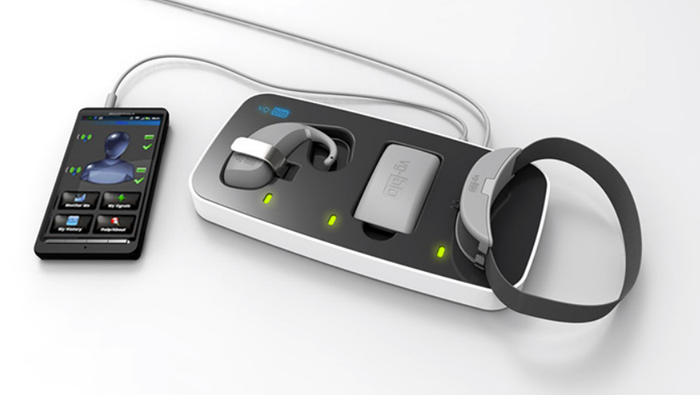A Game Plan for Systematic Innovation
September 9, 2015
The secret to developing a game-changing medical device is that it demands a methodical, rather than chaotic, product development process.
Craig Scherer
|
Craig Scherer is a senior partner and cofounder of Insight Product Development. |
Thinking outside the proverbial box does not have to require the mindset of a mad genius or the R&D budgets of the largest tech companies. Innovation can and should be systematic and it's still possible to innovate in a highly regulated field like the medical device industry.
In this article, I'll share the fundamentals of a system we've used repeatedly at Insight Product Development (Chicago) that will help you connect the dots between what the industry will accept, what technology can enable, and what a user needs to ultimately help you meet your business goals. While there will be concurrency to this system's stages as well as feedback loops, activities clearly build on each previous step, continuously course correcting to the most appropriate destination.
Take part in Insight Product Development's Design Innovation Workshop at Minnesota Medtech Week, which will be held on November 4 in Minneapolis. |
Like what you're reading? Subscribe to our daily e-newsletter.
1. Conduct Ethnographic User Research
Everything starts with user research. Understanding the complex interrelationship between target users, the environments in which they work, and the products and systems currently deployed is a critical starting point. This research helps us better identify, understand, and characterize the goals of target users and customers, match their behaviors and perceptions to those goals, and define the most appropriate use case. This understanding translates directly into how the innovation can drive value for the organization and how we might consider building solutions that will stick.
2. Execute Technology Research and Evaluation
Equally important to innovating with a purpose is discovering, inventing, acquiring, and evolving the most appropriate technology to best enable the user and the organization. Appropriate technology research and evaluation helps uncover and vet enabling technologies and uncover challenges that exist to applying a specific technology when it is a critical part of the innovation. Once a set of target technologies has been identified, their core functionality and performance needs to be evaluated on the bench to ensure that it can meet the specific requirements of the users and environments.
|
This predictive analytics system was developed by the startup PhysIQ, a recent graduate of Insight Accelerator Labs. |
Creating and effectively supporting a multifaceted and diverse technology pipeline is also critical. To increase your technology hit rates, use your own resources and create sustainable systems for technology innovation internally. But don't stop there. Foster support relationships with university startup incubators and participate in multiple medtech hubs and accelerators. As a healthcare focused company, it's also important to take off the industry blinders. Look for technology acquisition outside of medtech. This holistic approach guards against being blind-sided by a disruptive technology or innovation that could make your endeavors obsolete.
3. Identify the "Technology Readiness Quotient"
Technologies are often chosen for their ability to better enable users and work flows. However, putting all of a company's resources into a technology that is not quite ready for primetime can derail an innovation effort before it leaves the station. A technology's readiness level is of vital importance for the successful commercial scaling of the solution.
Once the value of a specific innovation is confirmed, it's time to start evaluating the technology across a number of downstream variables. What will the cost be to further evolve or adapt the technology from its raw form into an application specific form? Is there a repeating cost of acquisition such as a licensing arrangement per use? How well will the technology perform at a production scale? What are the availability of components and assemblies at production quantities? Can the technology be leveraged across other products within the business, offering greater amortization of the acquisition and development burden? The list goes on and on, but this exercise is critical. A technology that functions only on the bench is a deal-breaker.
4. Ascertain the Universe of Influencers
Once you have articulated the needs of your primary users and aligned the appropriate technologies to enable them to achieve their goals, it's time to evaluate how a great variety of systemic influences may affect the success of the overall innovation. The odds of success improve greatly when you clearly understand the complete impact of influences on your product and system. With regard to people, an intimate understanding of not only primary users through ethnography, but of numerous secondary users and stakeholders can help drive innovation. Additionally, successful innovation can also be informed by being aware of changing environments and workflows caused by other ancillary and competitive systems.
5. Create and Apply Appropriate Decision Criteria
Once the user and technology research has been executed and development has been initiated, there are several filters to consider that will help direct innovation down the most appropriate path. These filters already have included evaluations against fit with target users and use case and technology readiness and now should be applied and best support the business case. While most of these filters are common to many organizations, other company-specific filters are sure to exist in nearly every situation.
Some common filters include:
Overall technology and macro trends in healthcare, including the rapid decline in embedded displays in favor of mobile device control and the continuous downward cost pressure on devices and procedures.
Influences on the development process and project goals like regulatory compliance, FDA submissions, and reimbursement planning can also be of vital importance and are often a moving target. For example, the advent of evidence-based healthcare is already beginning to disrupt current reimbursement models.
Even social and behavior trends can greatly affect project goals and development decisions. Smartphones and cloud-based computing has dramatically changed how people access information and direct their own long term care and well-being.
6. Confirm Outputs with Users
Just as the technology used in the innovation platform has been developed and repeatedly tested and refined throughout the process, the usability and appropriateness of the device should also be. As innovators, we should be continuously measuring new system usability with users throughout the entire development cycle. Prototyping to learn at each stage, from simple mock-ups to higher fidelity representations as the technology evolves allows the development team to test and react to usability challenges anywhere along the development path with design changes.
The FDA stresses that not only final confirmation of the usability through summative testing is required but also iterative formative evaluations. Synonyms of the word "formative" include developmental, shaping, and moldable. Use this testing with these adjectives in mind. Test then let it define refinements to best support use case.
At the end of the day, it's not enough to innovate. Being the proverbial perfect solution in search of a need will not drive market success for your organization. Successful innovation is highly systemic, with users relying on the technology in a device to be appropriate for user interaction, all within the constraints of a specific environment and workflow and with the output satisfying all external influencers. By making innovation activities systematic, developers are freed up to be creative, outside-the-box innovators well positioned to repeatedly meet business goals and succeed in the marketplace.
Craig Scherer is the co-founder and senior partner of Insight Product Development (Chicago).
Take part in Insight Product Development's Design Innovation Workshop at Minnesota Medtech Week, which will be held on November 4 in Minneapolis. |
Like what you're reading? Subscribe to our daily e-newsletter.
About the Author(s)
You May Also Like



.png?width=300&auto=webp&quality=80&disable=upscale)
